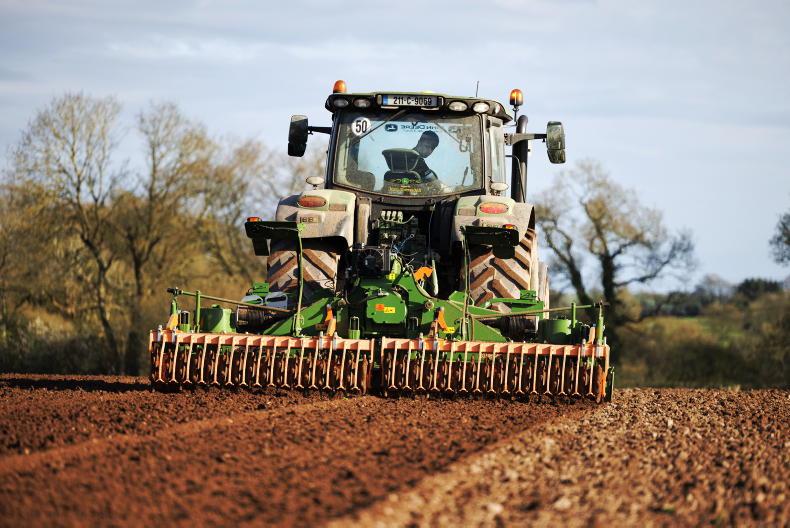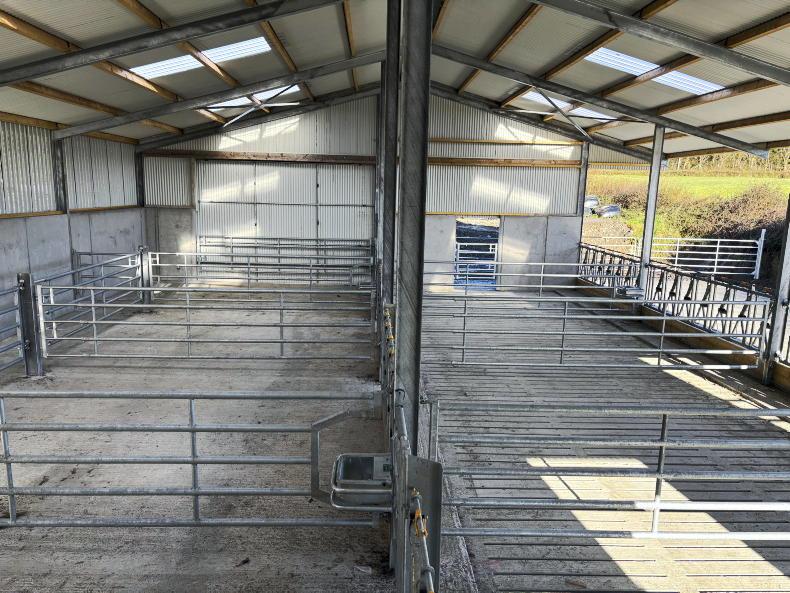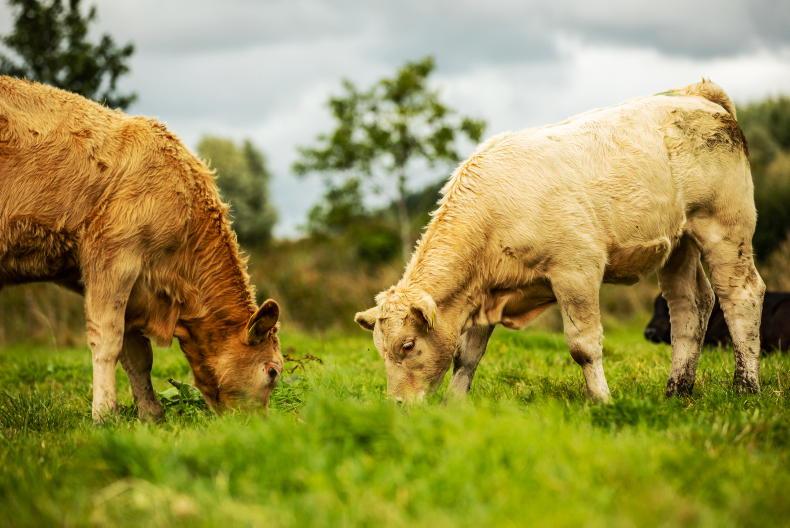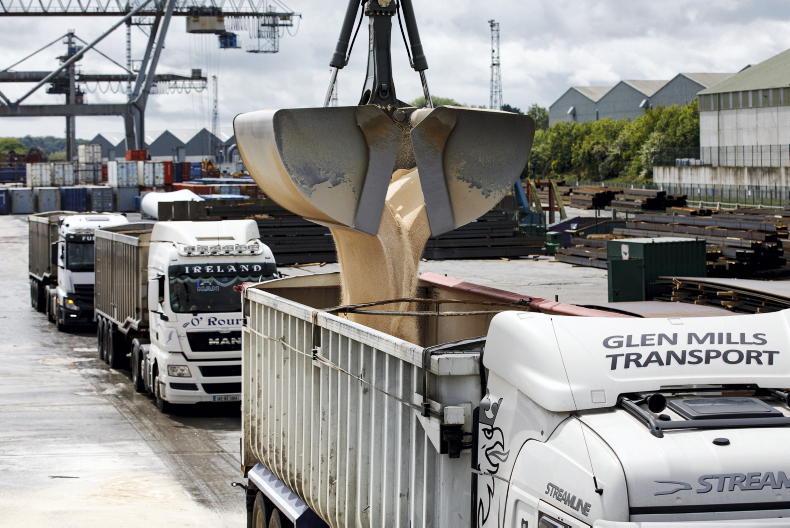Cereal production in Ireland could decline by almost 20% or over 443,000t in 2023, figures compiled by the Irish Farmers Journal show. This is likely to coincide with a cereal area decline of almost 18,000ha and an overall tillage area decline of 8,060ha (2%).
At a time when politicians and Government are talking very positively about tillage in this country and aiming for an increase in tillage area of over 50,000ha in the next seven years, these figures demonstrate a significant reduction in tillage area and a dramatic decrease in cereal production. The very opposite to what is meant to be happening according to current policies.
Following discussions with members of the seed trade and the tillage industry and considering crop condition at present, we have compiled predicted crop areas for 2023 and estimated yields, leading to production figures. It should be stressed that these figures are estimates, but estimates which have considerable data, thought and logic behind them.
However, final area figures will not be known until after BISS applications are complete at the end of May and many factors have yet to play into crop yields which could drive them up or down from current estimates.
Main factors playing into the decline in production are the loss of land to dairy, mainly due to nitrates rules this year, and in some cases solar farming. Poor weather conditions for winter planting and winter crop growth, as well as a delayed spring sowing campaign, which is ongoing, are all pointing to a downward output.
Cereal area
A wet winter planting season meant that the winter cereal planted area dropped massively. Winter barley area was worst hit and is estimated to have dropped by over 21,000ha. The winter wheat area recovered somewhat as growers persisted with planting into 2023. While the winter oats area dropped, this area was recovered in the spring and oat contracts probably help to keep the overall oats area up. It is hard to put estimates on winter cereal areas as in many cases seed was taken out, but never planted and remains on some farms.
The increase in oilseed rape and spring beans area was most likely going to eat into spring cereal area. However, when winter crops were not planted, the spring barley area regained some ground.
Those winter crops went into poor conditions in some cases and winter crops sat through a very wet winter, followed by a wet March and early April which delayed herbicide, nitrogen, fungicide and growth regulator applications. All of this will play into yield potential.
See Table 1 for estimated yields, with winter barley at 8.7t/ha (3.5t/ac), winter wheat at 9.8t/ha (3.9t/ac) and winter oats at 8.8t/ha (3.6t/ac).
Triticale and rye were not included in these figures as they do not fall into the main cereal area and have varying end uses, including wholecrop silage, and these crops are not included in the annual Teagasc harvest report which places an estimate on grain production.
Spring barley area is expected to increase by about 11,000ha, replacing some winter cereal area.
Many will feel spring barley yield is overestimated in the tables at 6.7t/ha (2.7t/ac). It is very hard to see the impact late planting will have at present and there might be some optimism in that figure.
Beans and oilseed rape
Spring beans and winter oilseed rape saw massive area increases this year. Spring beans are estimated to have increased in area by 4,700ha. Winter oilseed rape is expected to have increased by under 4,500ha.
Some spring beans were not planted until well into April and as a result yield may be affected. That crop’s yield was estimated at 5.9t/ha (2.4t/ac). This could result in beans production, along with winter beans, of almost 90,000t.
Winter oilseed rape’s yield was estimated at 4.8t/ha (1.94t/ac) and could result in over 91,000t of winter oilseed rape.
In the figures 5% of area is taken out of production calculations to account for hedges and margins. For the 2023 figures the Irish Farmers Journal increased this to 6% as the new CAP requires 3m buffers and nitrates regulations require 6m in some cases. More farmers are also implementing buffers due to a change in rules.
Nitrates derogation
This year the IFA estimated that dairy farmers needed 28,000ha to deal with nitrates banding rules or else needed to reduce stock numbers.
Tillage has lost out in many cases to dairy on the land rental market as a result, as those farmers held more power with bigger incomes and had more to spend on rented land.
With pressure coming on the nitrates derogation, it is important to note that if the derogation was reduced or phased out then farmers would need to reduce cow numbers or access more land – somewhere in the region of over 80,000ha. Again, the likely scenario is that more land would leave tillage to fill this gap.
Whether water quality will improve or not from farmers carrying out an exercise on paper is yet to be seen.
Tillage area increased by 6.1% last year, but in reality the Tillage Incentive Scheme saw a large amount of land undersown with grass and may only have been out of grassland from the time of cultivation until establishment. This scheme is in place for 2023.
However, despite the late planting season this year, the terms and conditions of this scheme have yet to be released. While we were made aware there will be a €200/ha payment for those who keep last year’s land in tillage, no requirements have been outlined.
The nitrates rules had unintended consequences which has resulted in dairy farmers searching for land to dilute stock numbers and tillage farmers have not been able to compete. The Food Vision tillage group has a job of work ahead and will hopefully promote more joined-up thinking and co-operation between livestock and tillage farmers. Actions are needed now, not this time next year. Tillage area is declining all of the time and after a good year in 2022, this season is proving difficult weather wise and profits look to be under pressure.
Tillage has the lowest carbon footprint of the main sectors at 1.18t/ha. A decline in area will not help to reach agricultural emission reduction targets.










SHARING OPTIONS